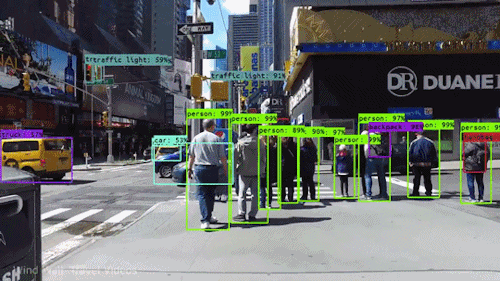3 Ways Computer Vision Is Redefining the Future of eCommerce
Here’s an interesting fact for you – by 2040, 95% of all purchases will happen online.
But that’s not too surprising, is it? After all, everyone appreciates the comfort of shopping online. Just a few clicks and you can get any product you want.
So, for eCommerce, the potential for growth is huge. But how can one stand out from the crowd in such a hotly contested space?
Among plenty of other factors, one factor that can have a significant impact on the success of an eCommerce business is product images. Since online shoppers cannot physically touch a product, images are the next best thing for them to get product information. Product images help them learn as much about the product as possible.
Moreover, since humans are visual creatures, images act as the primary draw to attract people to your eCommerce store. Therefore, if you own an eCommerce business or plan to start one, product images are one of the key things that you must focus on.
While all of it sounds good on paper, it’s not that simple. Managing a large eCommerce store means you must constantly manage hundreds and thousands of product images. This can be a lot of hassle if done manually.
That’s why we are looking at technology to help us. Most importantly, we are looking at integrating artificial intelligence (AI) in eCommerce. This would ensure easy management of all digital assets irrespective of the size or number.
In this article, we are going to look at a specific subset of AI called computer vision. We’ll look at 3 ways how computer vision is redefining the future of eCommerce while also understanding what computer vision is. So, let’s begin.
What is computer vision?
Since AI is incapable of having natural intelligence like humans, it cannot identify or detect things as we do.
It needs the help of a technology called computer vision to perform the same function. Computer vision, therefore, refers to a subset of AI that collects information and multi-dimensional data and uses it to process, analyze, and utilize visual data in the same way humans do.
The data collected is focused on helping computers process images at a pixel level and assist their decision-making.
In much simpler terms, computer vision is what gives machines the ability to see and interpret the world around them.
A popular application of computer vision is in autonomous vehicles also known as self-driving cars. These vehicles use computer vision to detect and classify objects they view on street and make driving decisions accordingly. The image below explains it well.
3 ways computer vision is redefining eCommerce
Now let’s quickly discuss the applications of computer vision in eCommerce.
1. Visual search

As per research, 62% of generation Z and millennial consumers want visual search capabilities.
Consider the following scenario – You want to look for a particular product but are unable to describe it properly with words. There are instances where regular search just won’t cut it.
That’s where visual search excels. It’s a convenient way to search for anything by simply dropping a picture in the search box. It makes it much more convenient for customers to search for specific products.
Thanks to computer vision, customers can benefit from an easier shopping experience. Many big players like Amazon are already testing the idea. You can just click a picture of a product and search it on Amazon to find similar products, all in a few seconds.
2. Product recommendations

Computer vision can be used by eCommerce platforms to create upselling opportunities. This is done by analyzing customers’ past purchase history and then recommending similar products that they might be interested in.
The goal is to offer personalized product recommendations to customers by letting the system automatically tag visual content. It has been shown that personalized product recommendations can significantly improve the average value of the order (also known as AOV).
These personalized recommendations also work well for customers who just come to your website to search for random items. Through product recommendations, you can convert them into paying customers.
Pinterest Style Finder is a great example of this since it shows potential customers items for cross-selling.
3. Augmented reality

Augmented reality (AR) in eCommerce makes it convenient for customers to preview their products before purchasing them.
This results in improved customer experience while also giving a boost to brand perception.
For example, using AR you can see how a table would look in your living room or you can try out a shirt and see how it looks on you.
Computer vision allows this by locating and rotating a product correctly to make it look real. These added visual elements make online shopping much more interactive.
IKEA is a great example. Using their app, the company allows customers to check out how the products they purchase would look in their homes.
Conclusion
To sum up, we are witnessing just the beginning of what computer vision is capable of. It’s an ever-growing technology that will have numerous exciting applications in the future. With time, computer vision is going to become ubiquitous in the eCommerce space.
For example, consider Amazon Go – the cashier-less store of the future. These stores allow customers to pick up products they want and then simply walk out of the door. This skips the checkout process entirely and allows customers to pay for the products later through their Amazon Go app. This has been possible because of computer vision, deep learning, and sensor fusion.
This and many such implementations of computer vision will be our future. So, did you like reading this piece? You can check out Dresma’s blogs to find more such articles.




